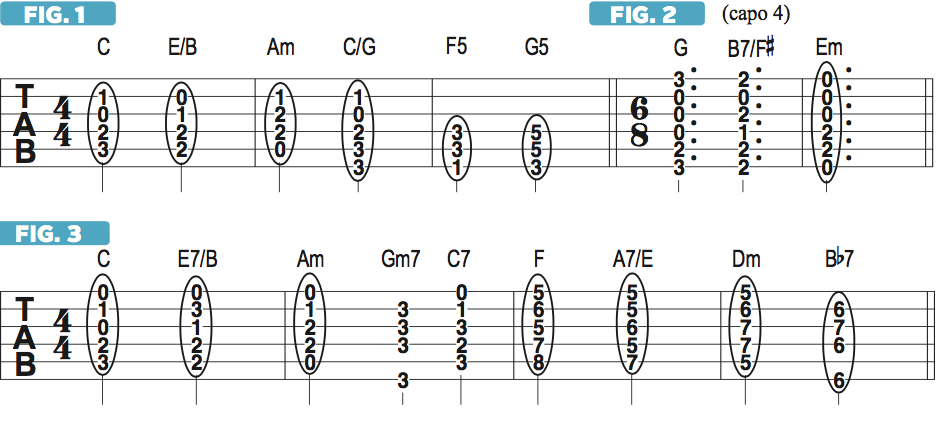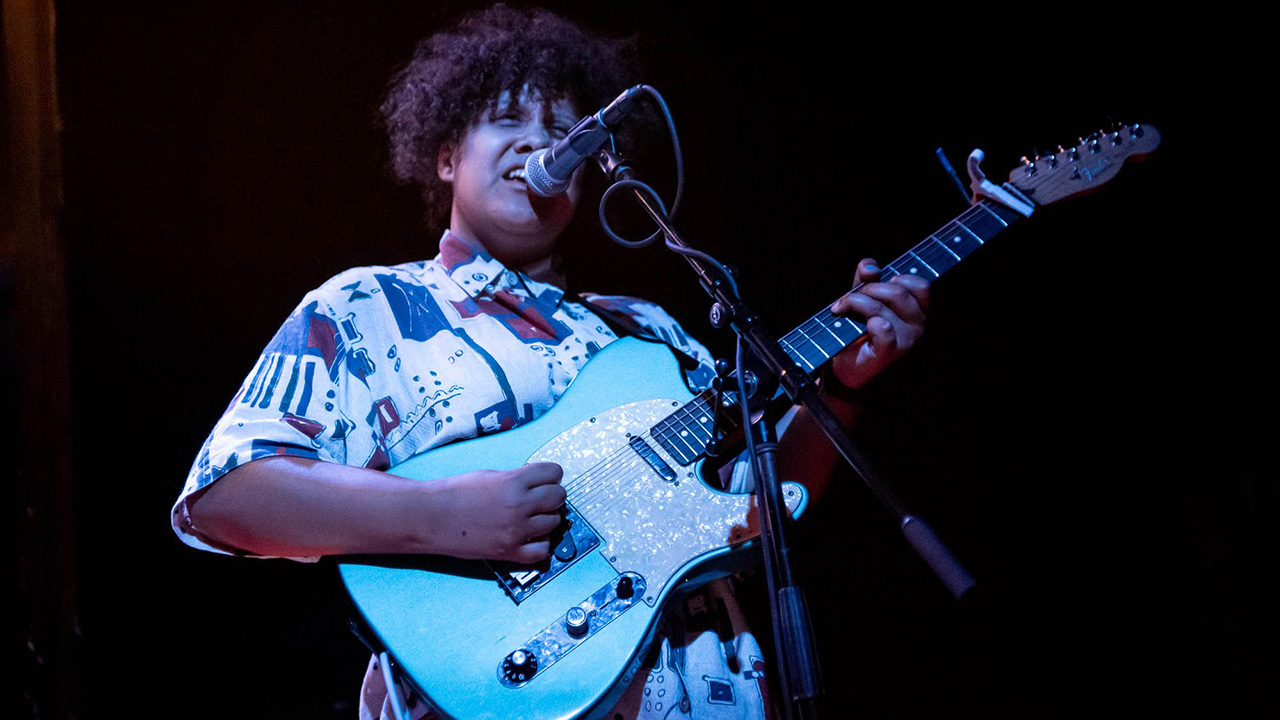This compositional trick has been used to great effect by Nirvana, Stone Temple Pilots, The Eagles, Queen and many more
Learn how to walk down scales with contrary motion
Continuing our exploration of chord progressions built around a bass line that walks down the major scale, I’d now like to explore a musically dramatic twist to this composition approach that has been used by many famous songwriters and bands in some of their most enduring works.
It’s a move that involves the second chord of the progression becoming a secondary dominant of the major key’s relative minor, or vi (six minor), chord, with an inner voice resolving upward and creating sweet-sounding contrary motion with the descending bass line. The result is a musically compelling and highly appealing sound that helps establish a tender mood for a vocal melody and lyric, which is why you’ll find it used mostly in laid-back ballads, so as to milk the juicy chord change.
A classic example of what I’m talking about here is the verse progression to Bell Bottom Blues by Derek and the Dominos, featuring Eric Clapton, who begins on a first-position open C chord then moves to E/B - an E chord with a B bass note, or E over B - which is a second-inversion triad (with the fifth in the bass) that resolves perfectly to Am, followed by the chords C/G (C over G), F and G, using the grips shown in FIGURE 1, which the guitarist gently arpeggiates in a flowing eighth-note rhythm. Notice the warm, down-home sound this move creates. (Also note that the original recording is 25 cents sharp of concert pitch.)
The verse progression to Take It to the Limit by the Eagles features almost the same move, but with a different set of open chords, a capo deployed at the fourth fret and the second chord being a dominant seven. As in FIGURE 2, the progression starts on G, followed by B7/F#, which is the second-inversion V7 (five-seven) chord of Em, to which it resolves (with everything transposed up a major third, due to the capo).

Note that, on the recording, bassist Randy Meisner goes up to the root of the second chord while the acoustic guitar does the walk-down with the inverted voicing. Paul Simon used pretty much the same progression in the chorus to Kodachrome, played capo 2, but with the guitar’s bass note going up to the root of the B7 chord instead of down to F#, which also sounds very nice, although I personally prefer the sound of the walk-down for this progression, with the low fifth in the bass instead of the root.
A classic keyboard-driven example of this three-chord progression is the beginning of the verse to the old jazz/blues/r&b standard Georgia On My Mind, famously recorded by Ray Charles in the key of G. In this case, the bass line initially moves from G down to F#, then flips up to B before resolving to Em. The verse progression to New York State of Mind by Billy Joel similarly starts on C, then goes to E7, which resolves to Am. Two bars later, Joel temporarily modulates to the IV chord, F, and does the same move - F to A7 to Dm. FIGURE 3 offers some nice voicings to play for these chords, with second-inversion dominant sevenths employed to create a bass drop.
A more up-tempo, rockin’ example of this move can be found in the choruses of Queen’s Keep Yourself Alive, wherein guitarist Brian May and bassist John Deacon effectively imply the chord progression D-F#/A#-Bm with two single-note lines moving in contrary motion, which works beautifully with May’s high-gain electric guitar tone. FIGURE 4 illustrates a composite of the two-voice counterpoint, with the bass notes transposed up an octave. In the song’s final chorus, they transpose the same progression up a minor third (three frets), to F, and also down a minor third, to B.
A somewhat more recent example of this move in a rock song, from the Nineties grunge era, can be found in the chorus to Lady Picture Show by Stone Temple Pilots, where guitarist Dean DeLeo arpeggiates the E and B#dim/D# voicings illustrated in FIGURE 5 with a shimmering rotary-speaker effect. (The second chord may be thought of as a rootless G#7.) The verse progression to Lithium by Nirvana features a similar progression - E5 G#5 C#5 - in this case with the bass drop being provided by bassist Krist Novoselic playing a low D# note beneath Kurt Cobain’s G#5 power chord, with both instruments being tuned down a whole step.

Get The Pick Newsletter
All the latest guitar news, interviews, lessons, reviews, deals and more, direct to your inbox!
Over the past 30 years, Jimmy Brown has built a reputation as one of the world's finest music educators, through his work as a transcriber and Senior Music Editor for Guitar World magazine and Lessons Editor for its sister publication, Guitar Player. In addition to these roles, Jimmy is also a busy working musician, performing regularly in the greater New York City area. Jimmy earned a Bachelor of Music degree in Jazz Studies and Performance and Music Management from William Paterson University in 1989. He is also an experienced private guitar teacher and an accomplished writer.











